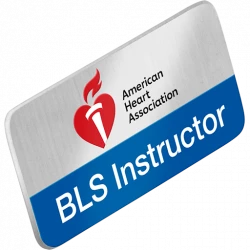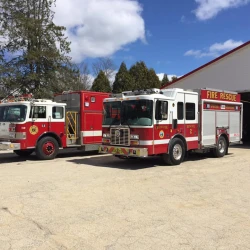When it comes to emergency medical services (EMS), the roles of Emergency Medical Technicians (EMTs) and Paramedics are often confused or used interchangeably by the general public. However, these two roles are distinct and hold specific responsibilities within the realm of pre-hospital emergency care. In this article, we will delve into the key differences between EMTs and Paramedics, shedding light on their unique skill sets, training requirements, and scope of practice.
EMTs: The First Line of Response
Emergency Medical Technicians, commonly referred to as EMTs, are crucial members of the EMS team. They are the first responders to emergency calls, providing essential care and stabilization to patients before and during transportation. EMTs play a vital role in initial patient assessment and treatment. Their training emphasizes basic life support (BLS) skills, which focus on stabilizing patients' conditions until they can be transferred to a medical facility for further care.
Training and Certification
EMT training programs typically span 3 months to 6 months, depending on the specific program and location. These programs cover fundamental medical knowledge, hands-on skills, and practical experience through clinical rotations. EMTs are trained to perform tasks such as cardiopulmonary resuscitation (CPR), administering oxygen, controlling bleeding, immobilizing fractures, and assisting with childbirth.
Upon completing their training, EMTs must pass the National Registry of Emergency Medical Technicians (NREMT) exam or a state-approved equivalent to become certified. Certification requirements may vary from state to state, but maintaining this certification often involves continuing education and periodic re-certification exams.
Scope of Practice
EMTs operate within a limited scope of practice compared to Paramedics. They are trained to provide basic medical interventions and support, but their abilities are constrained by their training and the resources available in the pre-hospital environment. EMTs can assess patients' vital signs, administer certain medications (like epinephrine for allergic reactions), and utilize airway management techniques such as basic airway adjuncts and bag-valve-mask ventilation.
Paramedics: Advanced Care in Critical Situations
Paramedics represent the highest level of care in the EMS hierarchy. They undergo more extensive training, possess advanced skills, and are authorized to administer a wider range of medications and interventions. Paramedics are equipped to manage more complex medical emergencies and are often referred to as "prehospital advanced life support" providers.
Training and Certification
Becoming a Paramedic involves a more rigorous training program compared to EMTs. These programs can last 1 to 2 years and delve deep into anatomy, physiology, pharmacology, and advanced medical procedures. Paramedic students gain hands-on experience in clinical settings and partake in supervised field internships to refine their skills in real-world scenarios.
Similar to EMTs, Paramedics must pass the NREMT exam to obtain their certification. This certification requires not only passing a comprehensive written exam but also successfully completing a practical skills assessment. Paramedics are also required to pursue ongoing education and periodic re-certification to stay up-to-date with the latest advancements in pre-hospital care.
Scope of Practice
Paramedics have an expanded scope of practice compared to EMTs. They can administer a broader range of medications, including intravenous medications and advanced cardiac life support drugs. Paramedics are skilled in advanced airway management techniques such as endotracheal intubation, which involves placing a tube into the patient's trachea to secure their airway. They can also perform cardiac monitoring, interpret electrocardiograms (ECGs), and provide interventions like defibrillation and synchronized cardioversion.
Key Differences at a Glance
To summarize, here are the key differences between EMTs and Paramedics:
1- Training Duration and Depth: EMT training is shorter and focuses on basic life support skills, while Paramedic training is more extensive and covers advanced life support skills and interventions. 2- Certification and Testing: Both EMTs and Paramedics must pass certification exams, but Paramedics undergo more comprehensive testing that includes written and practical components. 3- Scope of Practice: Paramedics have a wider scope of practice, allowing them to perform advanced medical procedures and administer a broader range of medications. 4- Skills and Interventions: Paramedics are trained in advanced airway management, cardiac monitoring, and complex medical interventions, while EMTs provide basic care and support. 5- Responsibilities: EMTs are often the first on the scene and focus on initial patient assessment and stabilization, while Paramedics manage more complex medical emergencies and critical care situations.
Conclusion
In the world of emergency medical services, both EMTs and Paramedics play vital roles in providing critical care during life-threatening situations. While EMTs serve as the first line of response, offering initial care and support, Paramedics bring a higher level of expertise and advanced interventions to the pre-hospital setting. Understanding the distinctions between these two roles is crucial for appreciating the collaborative efforts that ensure timely and effective care for patients in their moments of greatest need. Whether an EMT or a Paramedic, these dedicated professionals are the unsung heroes who make a significant difference in saving lives within our communities.





